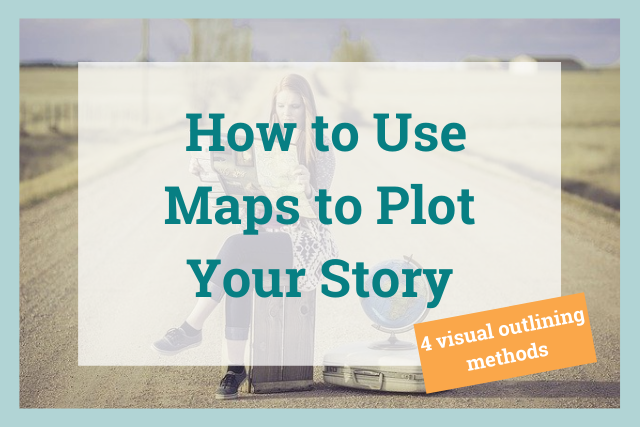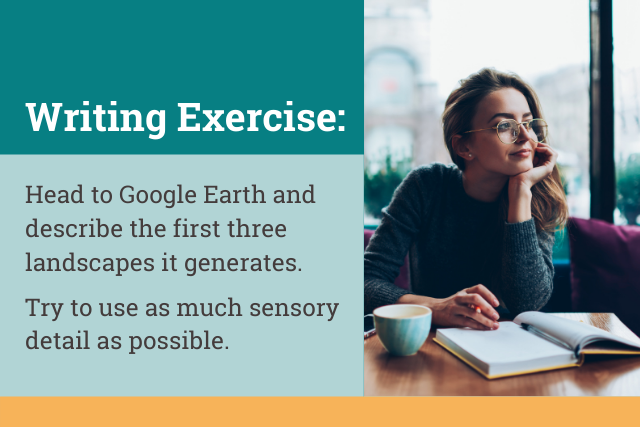
Plotting a novel can be difficult, especially if you are a visual person. Maybe outlines and plot timelines aren’t for you. But have you ever considered using a map to plot your story? They don’t have to just be used at the front of your book for your readers.
I use maps extensively when I’m world-building and planning, whether I’m working on fantasy or historical fiction. But maps can be used in so many ways for different genres of writers. I’ve compiled a handful of ways you can use maps—real or created by you—to plan your novel.
1. Calculate Distances and Time
It drives me crazy when characters end up in faraway places in no time at all. The opposite end of that is when they are on an insanely long journey that really should have been two weeks, tops. It pulls me out of the story immediately.
A map with a scale can help you calculate distances. If your story takes place in the real world, use Google Maps or Google Earth. If you’ve created your own map, you get to create the scale. You can even upload your maps to world-building programs like World Anvil or Campfire Blaze.
Then you can take it a step further. It’s easy to find average speeds for various means of travel. It might require you to brush off those math skills, but then you can be sure your ancient ship isn’t traveling at the speed of an airplane or that your Orc doesn’t somehow have superspeed.
2. Plot Notes for Locations and Routes
My newest favorite tool is Google MyMaps. This lesser-known Google app allows you to edit and create customizable maps using Google Maps programs. You can add map layers, locations, and routes. For each of these you can color-code them and add notes, links, and images.
Let me explain how I’ve used this for my historical fiction novel. I have locations that my characters visit color-coded by which colonizing power was ruling during the time.
I plot routes and number them for my journey. In these, I add notes where I calculate how long that journey would realistically take at the average ship speed for this time. I also color-code the routes by which ship it occurs on, and add notes to locations for big turning points.
You can add layers for different acts of your novel. It isn’t just for historical fiction, either! If you are writing a romance or mystery that takes place in a city, you can just zoom your map in and find all the places your characters visit. Action books that take spies or superheroes around the world can also benefit from using MyMaps.
3. Find Visually Accurate Details
Apps like Google Maps or Google Earth can allow you to visit locations for inspiration without ever leaving your desk. Street views can help you figure out realistic placement and character blocking for a scene. It can provide you with the visual details you need to improve your descriptions.
Your story doesn’t have to take place in a real location to use this feature, either. Does your romantic comedy take place in a fictional small town in Texas? Visit some small towns on the map to get an idea for how it should look. Does your murder mystery take place in a generic seaside Mediterranean village? Visit a few different villages on the map and find the common threads.
Even fantasy and sci-fi authors can use maps for inspiration. Look at mountains or beaches or deserts to get a feel for the environment. Check out old European cities with plenty of medieval buildings to inspire your fantasy city. As nice as traveling for our novels would be, it’s just not realistic for most of us. But map technology can help us create stunning, realistic visual descriptions in our stories.

4. Develop Your Worlds and Characters
All living creatures are products of their environments. Native animals are adapted to the geographic location, which is why you don’t find many penguins in the Sahara. Humans, too, adapt to our geography. You don’t wear a lot of shorts in Siberia, and you don’t eat a lot of saltwater fish in the Midwest United States.
Using a map to be aware of the environment allows you to craft realistic worlds and characters, even if they are fictional. If your character grows up in a small town with only one traffic light, visiting a big city will be overwhelming and even terrifying for them. Characters who grow up near a forest will have different outdoor skills than characters who grew up in a desert.
Maps can help ground you in the details to ensure that your world-building and character development feel authentic to your story.
Have you ever used a map to plan a story? How did you use it? Let us know in the comment section.


